Throughout my research career I have developed activity focused mainly on the interaction of solar radiation with different atmospheric components. Additionally, I carry out research in a second line, focused on the effects on ecosystems. In this line, I have been working on limnology and forest modeling.
In this entry of my portfolio I want to summarise some of my most important findings.
Innovative approaches to aerosol and solar radiation interactions

The max-kt model estimates the aerosol radiative forcing only from solar radiation measurements.
This method is computationally light making it a nice alternative to other methods including physical models.
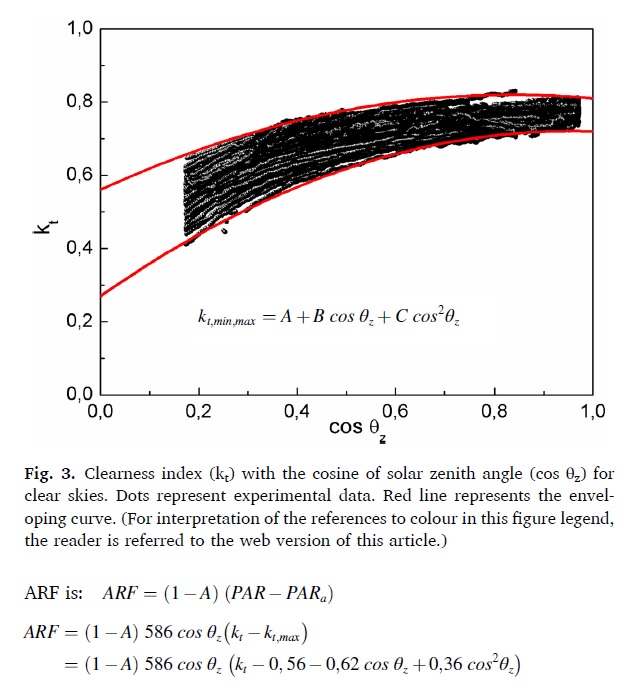
Clouds and aerosol effects on solar radiation


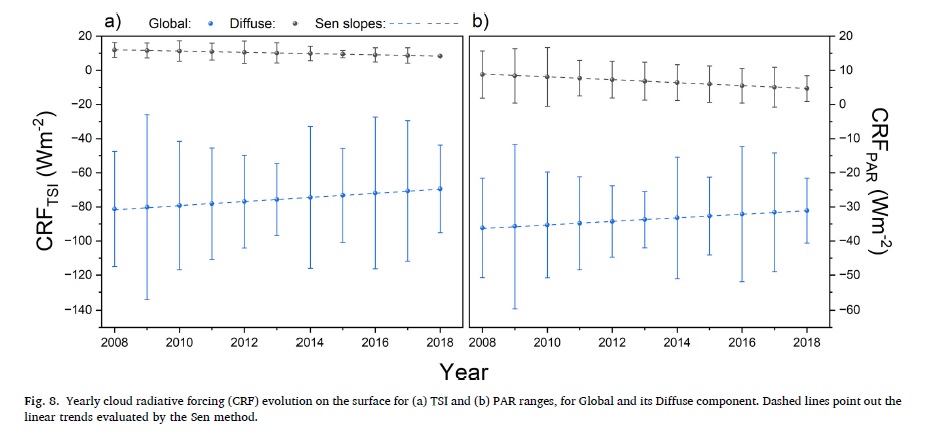
Long-term analysis on aerosols and cloud radiative effects at Granada (Southeast of Spain) were carried out spanning eleven years (2008-2018).
The downward trend in the cooling effects of clouds and aerosols over time highlighted the evidence of climate change.
This finding is compatible with a scenario of weakening on the masking effect of GHG’s warming by the cooling effect of aerosols and clouds. This weakening is observed even with an increase in the mineral dust inputs over the site along time.
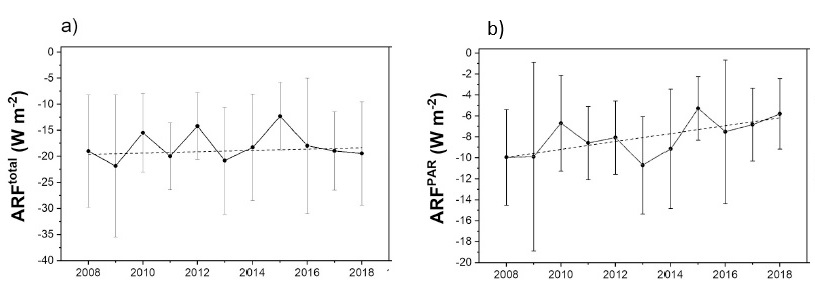
https://doi.org/10.1016/j.atmosres.2023.107072
https://doi.org/10.1016/j.atmosres.2021.105538
Improving the diffuse PAR modelling

This article main conclusion is to accurate diffuse PAR estimation are possible even when NO PAR measurements are available, i.e., from Total solar irradiance.
Considering that PAR is not a routine measurement variable in most radiometric stations, this is a great finding.
Evenmore, Artificial neural networks and empirical models have similar results modeling PAR from total range.
This research is directly applicable to improving predictive models, which is often a focus in environmental modeling and climate impact studies.
For example:
Changes Diffuse PAR may enhance photosynthesis, increasing carbon uptake and reducing GHG’s. Additoinally, shifts in PAR may affect soil microbial activity, potentially influencing methane (CH4) and nitrous oxide (N2O) emissions.
https://doi.org/10.1029/2023JD039256
Pioneering Experimental Design for Climate Change Impact

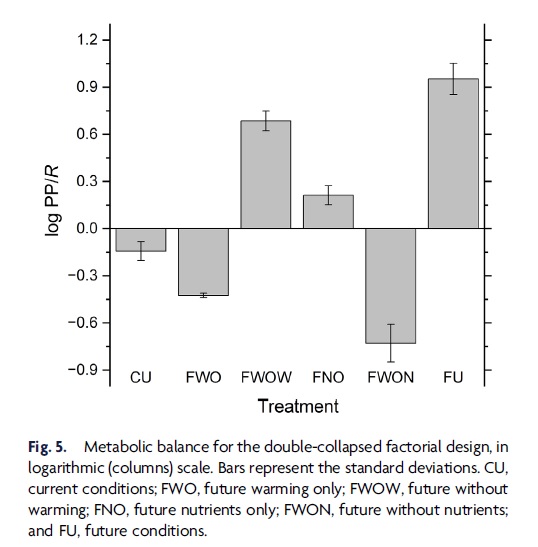
For this research I designed novel experimental units (UESC) and applied a innovative factorial design: double-collapsed factorial design.
Both allows to explore how combinations of key global-change drivers influence shifts between heterotrophic to autotrophic states in lakes. That is, from sources to sink of CO2. Therefore is an innovative approach to study water boies/atmosphere interactions.
Future scenario may potentially turning some inland water bodies into CO2 sinks.
https://doi.org/10.1071/MF23137
It is interesting to note that Martínez-García et al. (2024) also reported for the same reservoir that it can act as a CO2 sink. Meaning a «validation» of our novel approach.
Cutting-Edge Methods in Limnology

We have explored the coupling between phytoplankton and bacteria, demonstrating novel ways to analyse ecosystem metabolic balance through primary production and bacterial carbon demand ratios.
This insight contributes to understanding the energy flow and nutrient cycling in aquatic ecosystems.
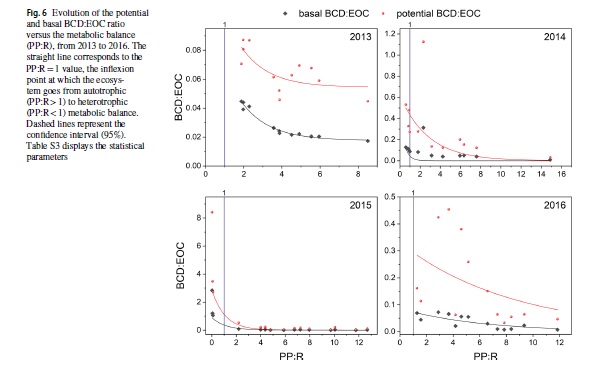
Interestingly, when the aquatic ecosystem act as a source of CO2 a weakening in the bacteria-algae relations was found.